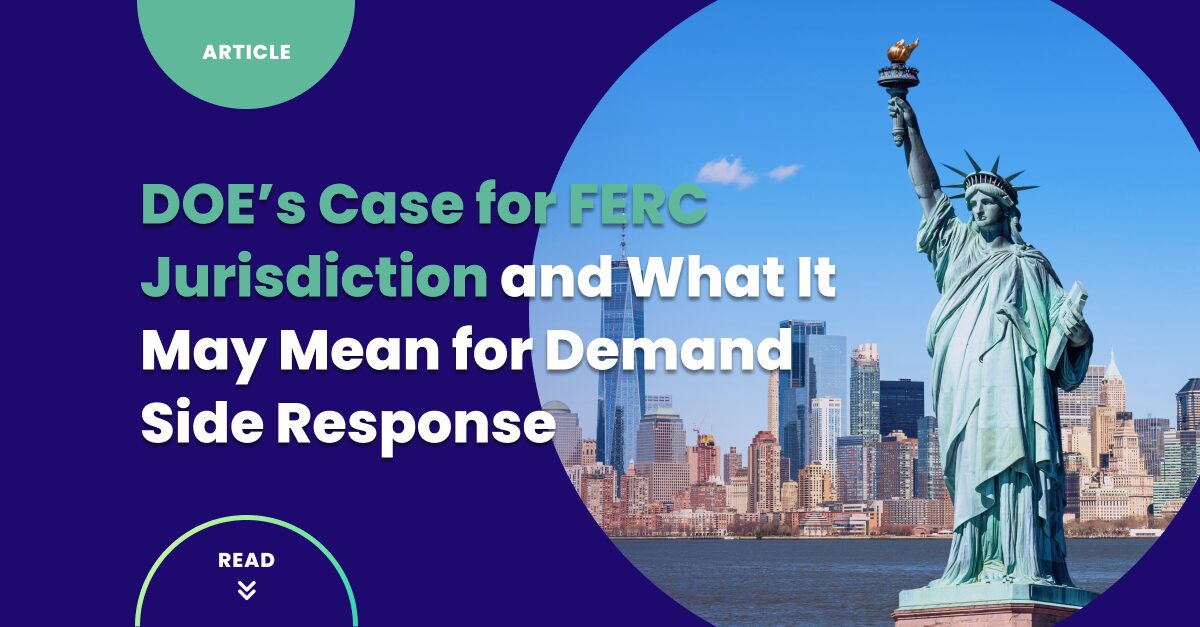Big Loads, Big Change: DOE’s Case for FERC Jurisdiction and What It May Mean for Demand Side Response

On October 23, 2025, the Secretary of Energy used Section 403 of the Department of Energy Organization Act to direct the Federal Energy Regulatory Commission (FERC) to initiate an Advance Notice of Proposed Rulemaking (ANOPR). While it is not common for DOE to use Section 403, it is also not unheard of, and its use here indicates that the administration views the growth of large electric loads as a priority as well as an infrastructural concern.
The core elements of DOE’s request include:
- Assert FERC jurisdiction over interconnections for large loads (> 20 MW) that connect to the transmission system.
- Standardize the interconnection process for large loads and hybrid load + generation facilities. Requiring that these large loads, many of which are expected to be AI data centers and manufacturing facilities, be able to connect in a “timely, orderly, and non-discriminatory” manner.
- Assign 100% of network upgrade costs to the large-load customer (though the letter states that costs crediting mechanisms may be open for discussion).
- Clarify that these reforms do not interfere with states’ jurisdiction over retail electric service or generation siting.
- Request FERC take final action by April 30, 2026.
Why This Matters
If adopted, the rule would shift parts of the interconnection process from state to federal jurisdiction. Essentially, large load interconnections that occur at the transmission level would become subject to FERC authority. This indicates a shift in regulatory power, particularly in regions experiencing rapid data center growth.
It is also likely that we will see a surge in transmission-level load interconnection requests following the potential adoption of this order. This is exactly what happened when FERC approved Order 2003 for new generator interconnections. While this may help meet the accelerating power demand driven by AI, it raises unresolved questions like:
- Who pays for grid expansion?
- How are local ratepayers protected?
- How will utilities manage reliability for large, constant loads?
Implications for DR, VPPs, and DERs
The interconnection debate is not just about data centers gaining access to the grid, it is about the role these facilities will play once they are connected. Data centers are typically steady-state, high-reliability loads with limited curtailment functionality. If they enter the system as inflexible consumers, the grid risks becoming more rigid at the exact moment when flexibility is imperative to balancing renewable generation and electrification growth.
However, DOE’s letter contains an important ray of light, “Interconnection studies should be expedited for large loads and hybrid facilities that agree to be curtailable or dispatchable.” This at least acknowledges that flexibility should be a consideration in interconnection requirements.
The impact of this order depends on FERC’s response and potential implementation. The DOE is not just asking FERC to accommodate more load, it is asking the grid to decide what kind of load our future energy system will prioritize. If large loads are required, or at least incentivized, to be flexible, curtailable, or hybridized with storage, they could become a massive source for demand response and virtual power plant capacity.
But if they are allowed to interconnect as rigid, constant consumers, we risk doubling down on a static, less resilient grid. This rulemaking is not just about a shift in regulatory power. It is a fork in the road for the future of demand-side participation in the U.S. power system.